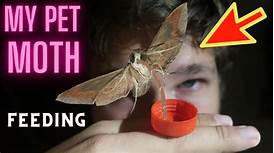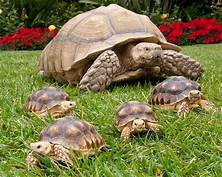Can You Keep Moths as Pets?
Moths' beauty and unique life cycle have sparked interest in keeping them as pets. While not as popular as cats or dogs, moths can make fascinating companions for those willing to provide the necessary care and attention. However, before bringing a moth into your home, there are several factors to consider, ranging from their diet to their lifespan.

Benefits of Keeping Moths as Pets
1. Unique Beauty: Moths come in various colors, patterns, and wingspan, making them captivating creatures to admire and study.
2. Interesting Life Cycle: Observing the metamorphosis of a moth from egg to caterpillar to pupa to adult can be an educational and visually stunning experience.
3.Minimal Space Requirements: Moths typically have small size and compact enclosures, making them suitable for apartments or small living spaces.
Considerations Before Keeping Moths as Pets
1.Short Lifespan: Adult moths generally live for only a few weeks, so be prepared for their short lifespan and the emotional impact of their passing.
2.Specialized Diet: Moths have specific dietary needs, such as nectar, pollen, or certain types of leaves, which can be challenging to provide consistently.
3.Environmental Requirements: Moths thrive in specific temperature, humidity, and light conditions, which may require specialized equipment or modifications to your home environment.
4.Legal and Ethical Considerations: Depending on the species, keeping moths as pets may be illegal or unethical in certain regions, so research local regulations and consider the well-being of the moth before acquiring one.
Caring for Moth Pets
1.Enclosure: Provide a suitable enclosure that allows for proper ventilation and sufficient space for movement and resting.
2.Diet: Offer the appropriate diet based on the moth species, including nectar, pollen, or specialized leaves. Consult experts or reliable sources for specific dietary information.
3.Temperature and Humidity: Maintain consistent temperature and humidity levels suitable for the moth species. Use thermometers and hygrometers to monitor conditions.
4.Lighting: Provide appropriate lighting conditions, including periods of darkness and light to mimic their natural habitat.
5.Handling: Handle moths with care and gentleness, avoiding excessive touching or disturbing them during their resting or feeding times.
Conclusion
Keeping moths as pets can be a rewarding experience, but it requires dedication, knowledge, and a commitment to providing the necessary care for these delicate creatures. Weigh the benefits and considerations carefully, and ensure you have the resources and expertise to provide the best possible environment for your moth pet.
Declaration: All article resources on this website, unless otherwise specified or labeled, are collected from online resources. If the content on this website infringes on the legitimate rights and interests of the original author, you can contact this website to delete it.






